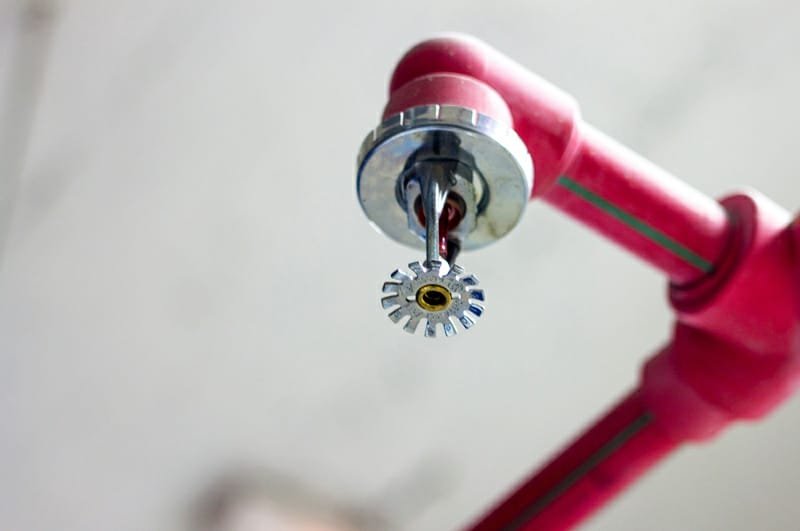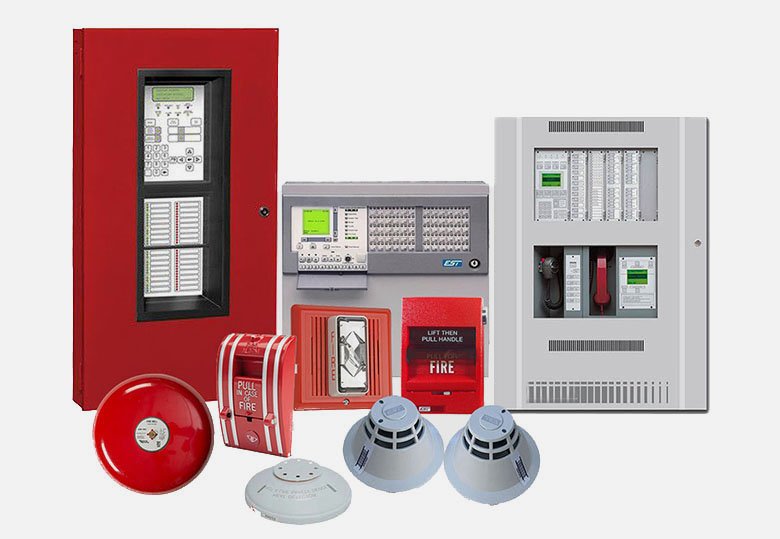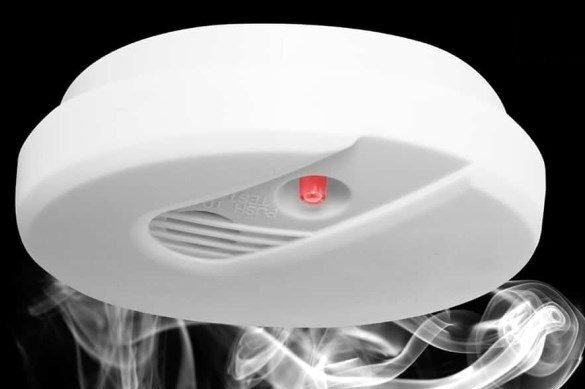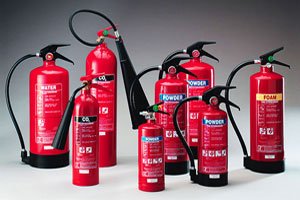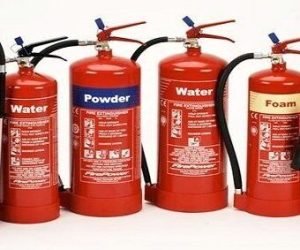
A smoke detector in Dubai is a device that senses smoke, typically as an indicator of fire. Commercial security devices issue a signal to a fire alarm control panel as part of a fire alarm system, while household smoke detectors, also known as smoke alarms, generally issue a local audible or visual alarm from the detector itself.
Smoke detectors are housed in plastic enclosures, typically shaped like a disk about 150 millimetres (6 in) in diameter and 25 millimetres (1 in) thick, but shape and size vary. Smoke can be detected either optically (photoelectric) or by physical process (ionization); detectors may use either, or both, methods. Sensitive alarms can be used to detect, and thus deter, smoking in areas where it is banned. Smoke detectors in large commercial, industrial, and residential buildings are usually powered by a central fire alarm system, which is powered by the building power with a battery backup. Domestic smoke detectors range from individual battery-powered units, to several interlinked mains-powered units with battery backup; with these interlinked units, if any unit detects smoke, all trigger even if household power has gone out.
The risk of dying in a home fire is cut in half in homes with working smoke alarms. The US National Fire Protection Association reports 0.53 deaths per 100 fires in homes with working smoke alarms compared to 1.18 deaths in homes without (2009–2013). Some homes do not have any smoke alarms, some alarms do not have working batteries; sometimes the alarm fails to detect the fire.[1]
How Smoke Detectors Can Save You In An Emergency
Smoke detectors are made to alert you of a fire. A lot of fires end in the result of a total loss. Not only will you lose valuables but you can also lose a life. That’s why at Protect America we provide monitored smoke detectors. Our detectors will alarm the monitoring station in the event of a fire and also send you an alert at the same time if you have SMART Connect, our security app. This will allow for the authorities to be alerted and possibly can save your life or your home and valuables.
The Two Types of Smoke Detectors: Ionized vs Photoelectric
Smoke detectors can come in all shapes and sizes. They can vary from color, weight, brand and what type they are. Most people are unaware of what differentiates smoke detectors. There are two different types; ionized smoke detectors and photoelectric smoke detectors. There is actual a third type that is a combination of both, but we will go into more detail about that sensor in a future article.
Ionized smoke detectors are ideal for flaming fires. Where there is a lot more heat produced with the certain type of smoke flaming fires produce, ionized detectors will be quick to send off a signal. Photoelectric smoke detectors are great for smoldering fires. These fires usually start slow and create a lot more smoke. These fires are known to occur without much noise, and can create breathing problems for certain people making them pass out. Both sensors will be sufficient for any home and will detect fire no matter what. They just sense different types of fires due to the way they are built.
Smoke detectors are housed in plastic enclosures, typically shaped like a disk about 150 millimetres (6 in) in diameter and 25 millimetres (1 in) thick, but shape and size vary. Smoke can be detected either optically (photoelectric) or by physical process (ionization); detectors may use either, or both, methods. Sensitive alarms can be used to detect, and thus deter, smoking in areas where it is banned. Smoke detectors in large commercial, industrial, and residential buildings are usually powered by a central fire alarm system, which is powered by the building power with a battery backup. Domestic smoke detectors range from individual battery-powered units, to several interlinked mains-powered units with battery backup; with these interlinked units, if any unit detects smoke, all trigger even if household power has gone out.
The risk of dying in a home fire is cut in half in homes with working smoke alarms. The US National Fire Protection Association reports 0.53 deaths per 100 fires in homes with working smoke alarms compared to 1.18 deaths in homes without (2009–2013). Some homes do not have any smoke alarms, some alarms do not have working batteries; sometimes the alarm fails to detect the fire.[1]
How Smoke Detectors Can Save You In An Emergency
Smoke detectors are made to alert you of a fire. A lot of fires end in the result of a total loss. Not only will you lose valuables but you can also lose a life. That’s why at Protect America we provide monitored smoke detectors. Our detectors will alarm the monitoring station in the event of a fire and also send you an alert at the same time if you have SMART Connect, our security app. This will allow for the authorities to be alerted and possibly can save your life or your home and valuables.
The Two Types of Smoke Detectors: Ionized vs Photoelectric
Smoke detectors can come in all shapes and sizes. They can vary from color, weight, brand and what type they are. Most people are unaware of what differentiates smoke detectors. There are two different types; ionized smoke detectors and photoelectric smoke detectors. There is actual a third type that is a combination of both, but we will go into more detail about that sensor in a future article.
Ionized smoke detectors are ideal for flaming fires. Where there is a lot more heat produced with the certain type of smoke flaming fires produce, ionized detectors will be quick to send off a signal. Photoelectric smoke detectors are great for smoldering fires. These fires usually start slow and create a lot more smoke. These fires are known to occur without much noise, and can create breathing problems for certain people making them pass out. Both sensors will be sufficient for any home and will detect fire no matter what. They just sense different types of fires due to the way they are built.
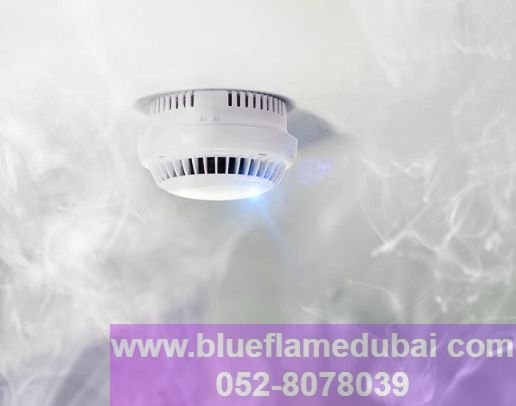
contact us for smoke detectors and heat detectors at very low price with different approved brands







